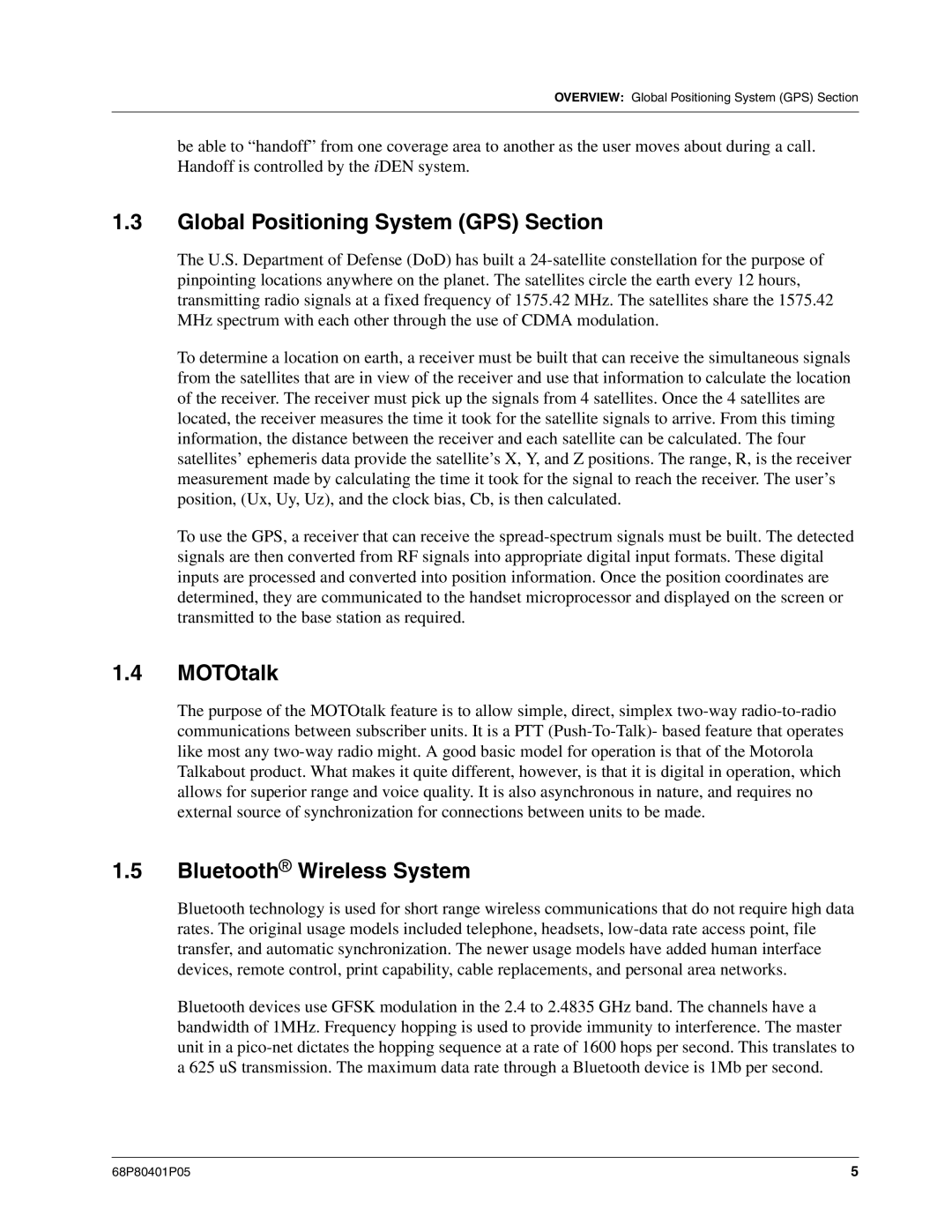
OVERVIEW: Global Positioning System (GPS) Section
be able to “handoff” from one coverage area to another as the user moves about during a call. Handoff is controlled by the iDEN system.
1.3Global Positioning System (GPS) Section
The U.S. Department of Defense (DoD) has built a
To determine a location on earth, a receiver must be built that can receive the simultaneous signals from the satellites that are in view of the receiver and use that information to calculate the location of the receiver. The receiver must pick up the signals from 4 satellites. Once the 4 satellites are located, the receiver measures the time it took for the satellite signals to arrive. From this timing information, the distance between the receiver and each satellite can be calculated. The four satellites’ ephemeris data provide the satellite’s X, Y, and Z positions. The range, R, is the receiver measurement made by calculating the time it took for the signal to reach the receiver. The user’s position, (Ux, Uy, Uz), and the clock bias, Cb, is then calculated.
To use the GPS, a receiver that can receive the
1.4MOTOtalk
The purpose of the MOTOtalk feature is to allow simple, direct, simplex
1.5Bluetooth® Wireless System
Bluetooth technology is used for short range wireless communications that do not require high data rates. The original usage models included telephone, headsets,
Bluetooth devices use GFSK modulation in the 2.4 to 2.4835 GHz band. The channels have a bandwidth of 1MHz. Frequency hopping is used to provide immunity to interference. The master unit in a
68P80401P05 | 5 |
